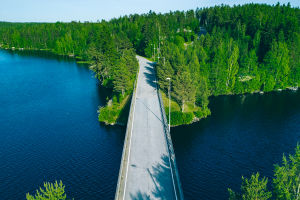Have you ever gazed at the vibrant array of birds in the forest, the dazzling patterns of fish in the sea, or the boundless plant species in a meadow and wondered—how did such extraordinary variety arise?
Get ready to embark on a journey into the heart of evolution, the invisible force shaping Earth's marvelous living tapestry!
Evolution: The Artist of Diversity
Evolution is the ongoing process by which living organisms adapt and change across generations. It is through this endless creativity that the breathtaking diversity of life—known as biodiversity—emerges and is sustained.
Evolution does not paint with a single brushstroke; instead, it operates through fresh genetic variations in populations, minute inherited changes, and, over long stretches of time, can lead to the formation of entirely new species. Like an artist working on a massive canvas, evolution produces everything from microscopic life forms to splendid redwoods and blue whales.
The Engines of Evolution: Natural Selection and Adaptation
One central engine of evolutionary change is natural selection. Imagine a population of animals—perhaps finches on remote islands—with different beak shapes. Some beaks are perfect for cracking seeds, while others excel at sipping nectar. If a new drought makes seeds scarce, finches with the perfect beak for the available food are more likely to survive and raise young that inherit this benefit.
Over many generations, these advantageous traits accumulate, making the population better suited for survival. From the web-spinning talents of spiders to the protective coloration of chameleons, adaptations enable species to flourish within specific environments—always responding to shifting climates, competitors, and resources.
Speciation: Nature's Creative Breakthroughs
Sometimes, evolution takes creatures on such divergent journeys that new species emerge in a drama called speciation. This often occurs when populations of a species become separated—by a mountain, river, or even a patch of ocean. Over time, isolated groups face unique environments and evolve distinctive traits.
Eventually, these groups become so genetically different that they can no longer interbreed—a new species is born! This process, repeated countless times throughout Earth's history, is responsible for the launch of major groups like birds, mammals, and flowering plants. Speciation is why Earth isn't home to just one type of cat or flower, but to thousands, each thriving in its own ecological niche.
The Impact of Environmental Change
Earth's environment is in constant motion, and with every swing—an ice age, a volcanic eruption, a shift in ocean currents—living things are tested. These changes often force species to adapt or vanish; those able to meet new challenges persist and diversify.
The rise in atmospheric oxygen some 500 million years ago, for example, set the stage for the explosion of complex animal life. Each environmental shift brings new opportunities for evolutionary creativity, fostering the appearance of remarkable forms—from armored dinosaurs to delicate butterflies.
Genetic Variation: The Palette of Evolution
Variation is the palette evolution draws from. Within every species, individuals are slightly different thanks to the unique mixture of genes they inherit from their parents. Ongoing mutations, gene swapping during reproduction, and even mixing between populations all shuffle the genetic deck.
This diversity ensures that when conditions change, at least some individuals may be equipped to thrive, keeping populations going strong and allowing new evolutionary paths to open.
Evolution in Action: Living Examples
Evolution isn't just ancient history—it’s happening all around us. Human activity continues to shape it, as species adapt to urban environments, pollution, and shifting climates. Evolution remains our constant companion, quietly guiding life into the future.
Why Evolution Matters
Understanding evolution is key for appreciating life's complexity and for addressing real-world challenges, from protecting endangered species to combating medicine-resistant microbes. Conservation scientists, evolutionary biologists, and ecologists all harness these insights to sustain biodiversity—the very fabric of human well-being.
As renowned experts highlight, maintaining Earth's evolutionary history helps secure benefits like food, clean air, and novel medicines for generations to come.


